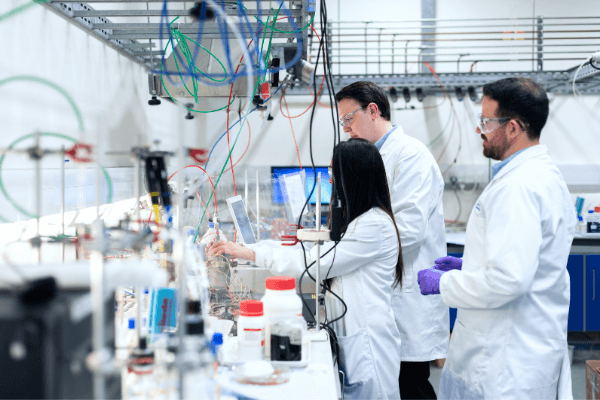Accelerated aging tests of materials are a key piece to be able to measure the degree of resistance and reliability of industrial products. In this post we explain how these tests work and when they are applied in the different productive sectors.
What is accelerated material aging?
The accelerated aging process of materials is a phenomenon of advanced deterioration of substances that does not occur naturally, but rather caused by their exposure to artificial environmental situations in scientific and industrial laboratories, which can affect both their structure and their functionality.
What are accelerated material aging tests for?
Accelerated aging tests are used to measure the evolution of materials in extreme atmospheric contexts. To do this, a series of specific climatic conditions are recreated that provide valuable information on the properties of the samples.
In this way, the main objective of advanced aging tests is to calculate the useful life of the materials, to guarantee that the objects that go on the market or are integrated into the production chain meet the quality requirements established in the legislation current (therefore very common in all types of product life testing).
How is the aging process of materials measured?
The best way to estimate the aging of materials accurately is to observe their changes when they are in contact with chemical and physical agents of varying intensity and nature. Many of the tests are carried out in climatic chambers that simulate a wide range of scenarios, either by combining various environmental factors with each other or in isolation.
Here are the most common types of accelerated aging tests:
Accelerated aging of materials by radiation
Within this area, the most common tests are those that study the aging process of materials during their exposure to light by means of controlled amounts of ultraviolet radiation. This type of test is also carried out to check the effects of ionizing radiation such as X-rays and gamma rays.
Accelerated aging of materials by temperature
It consists of placing the materials in thermal chambers that induce specific temperatures, both constantly and with sudden changes. As a general rule, the thermal ranges that each substance must withstand depending on its geographical and functional location are studied.
Accelerated aging of materials due to moisture
They measure the corrosive action of water in its different phases and forms, whether natural or artificial, taking into account relevant factors such as the relative humidity of the air and its salinity. Among the methods with which these tests are usually carried out, the different types of corrosion tests stand out.
Accelerated aging of materials due to polluting gases
This type of tests analyze the action of gases present in the environment, including those generated by pollution in cities. In this way, studies are made with ozone, dichlor and other corrosive gases such as hydrogen sulfide, sulfur dioxide or nitrogen dioxide.
Accelerated aging of materials by erosion
It involves placing the samples in an environment with air loaded with abrasive particles, which is used to measure the development of erosion on the surface of materials that must remain outdoors or in places with demanding environmental conditions.
When is it useful to study the aging of materials?
Quantifying the accelerated aging process of materials entails a series of very important advantages, as it helps companies and entities that produce all kinds of goods to:
- Characterize the materials according to their physical and chemical properties.
- Predict the durability of substances.
- Improve the design and manufacture of components.
- Choose the most suitable materials for each use.
- Prevent accidents and breakdowns.
- Create stronger and more durable products.
Thanks to all these benefits, advanced aging analysis of materials is used in sectors as varied as construction, the petrochemical industry or aeronautical engineering, among many others, to define the behavior of compounds such as metals, plastics, concrete, wood, textile fibers, coatings, welds, paints and protective coatings.
If you need to perform accelerated aging tests on materials, do not hesitate to contact our forensic engineering service. We will help you optimize the life of your products with the most advanced technological procedures.
Keep visiting our blog to stay informed about the latest developments in the materials industry.





